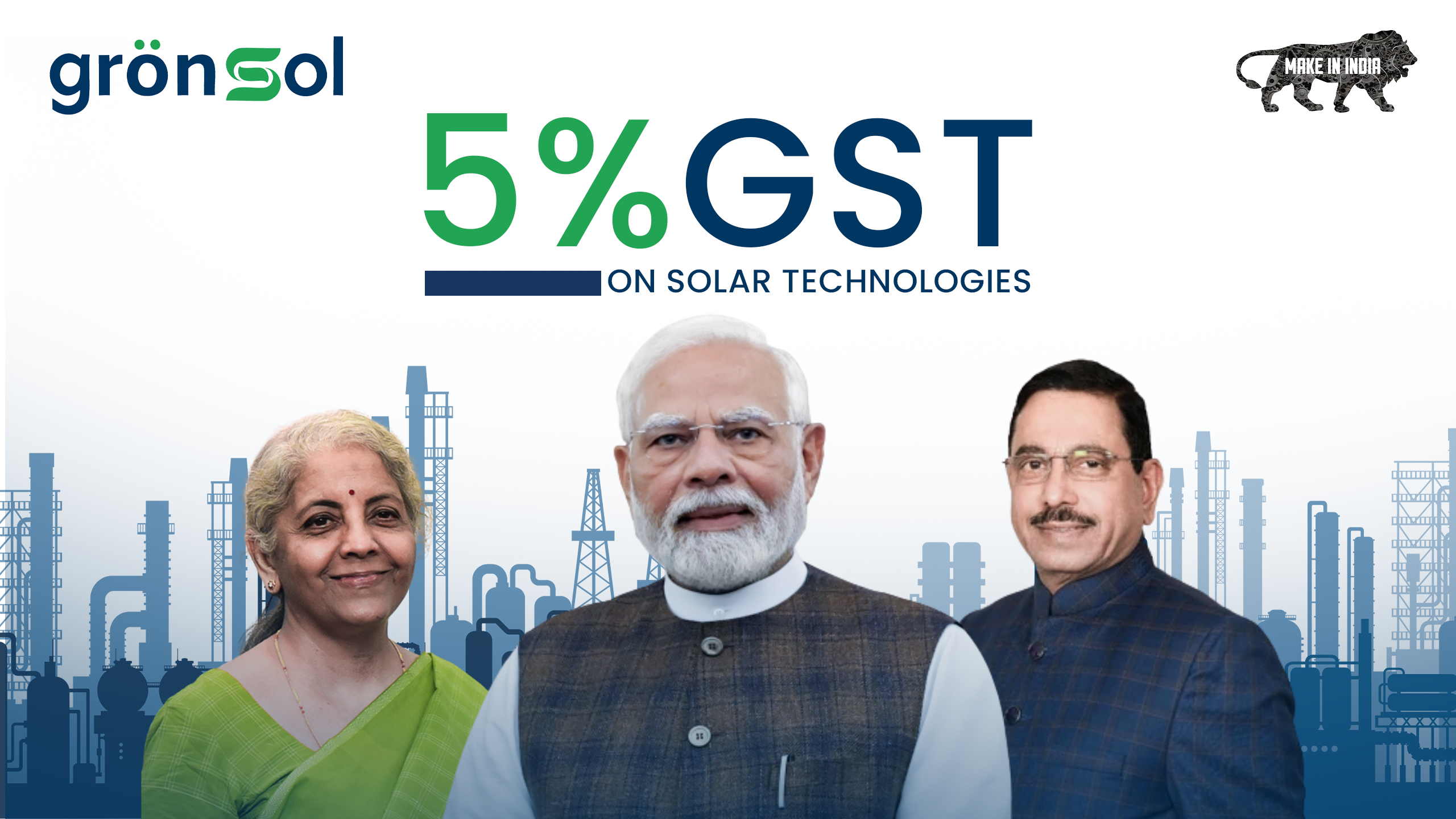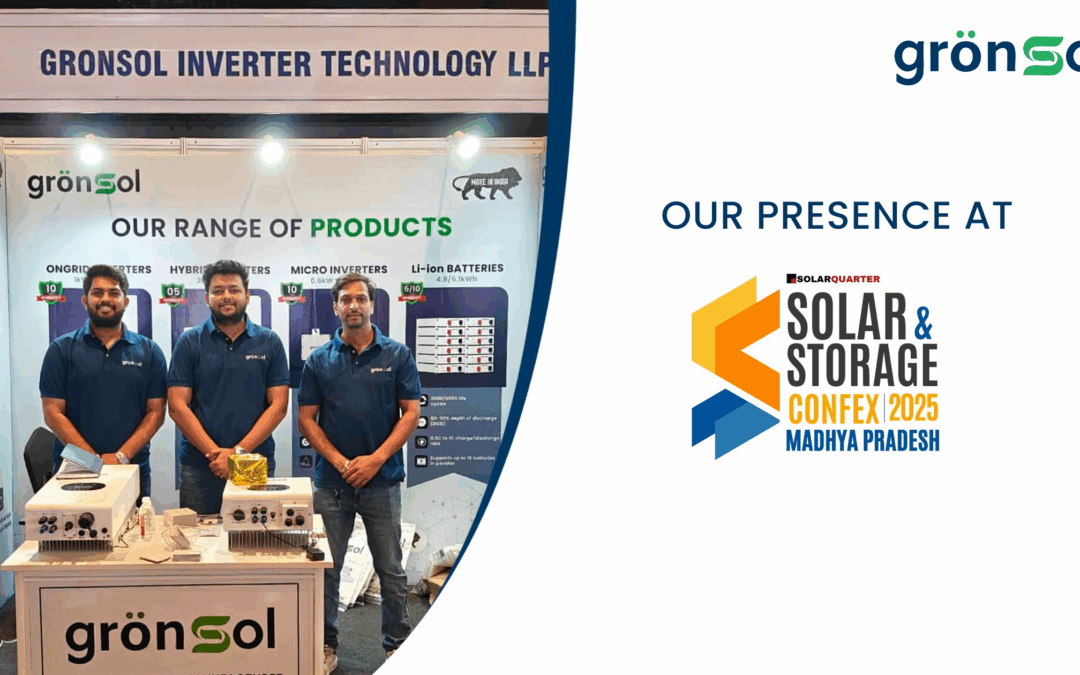India has been making tremendous strides in the renewable energy sector, especially solar. With the government’s continued push for clean energy under the Make in India initiative, solar technologies are now more affordable than ever – thanks to the 5% GST slab on solar equipment.
GST on Solar Inverters in India (2025)
Solar inverters have become a crucial part of every solar system, whether for homes, businesses, or industries. They convert DC power from solar panels into usable AC power. But one of the most discussed aspects of solar adoption in India is taxation, particularly the Goods and Services Tax (GST) on solar inverters. On 22 September 2025, the Government of India introduced a new GST structure with the aim of simplifying slabs and reducing the tax burden on renewable energy products. Understanding how New GST impacts inverter prices is crucial for consumers and businesses alike.
What is GST on Solar Inverters?
The Goods and Services Tax (GST) is a unified indirect tax system introduced in India in 2017. Like panels, batteries, and other solar components, solar inverters also fall under the GST framework.
When you purchase a solar inverter individually or as part of a complete solar system, GST is levied depending on whether it’s sold standalone or bundled.
Evolution of GST on Solar Inverters
- 2017 (Launch of GST): Solar inverters were taxed at 18%.
- 2018 – 2020: Clarifications issued by GST Council for bundled systems under EPC contracts.
- 2021 – 21st Sep 2025: Composite supply rule applied – inverters taxed at 12% when sold as part of the solar system.
- New GST Structure – From 22 Sep 2025: Solar inverters, when sold as part of a solar system, are taxed at just 5%, reducing costs for EPC companies and end-users.
| Year / Period | GST Rate on Solar Inverters | Remarks |
| 2017 (Launch of GST) | 18% | Inverters classified as electrical equipment, taxed at standard rate. |
| 2018 – 2020 | 18% (standalone) / 12% (bundled under EPC) | Clarifications issued – bundled solar systems got reduced effective GST. |
| 2021 – 21st Sep 2025 | 12% | Composite supply rule applied: Inverters under solar generating system taxed at 12%. |
| From 22nd Sep 2025 (New GST) | 5% | Major reform – inverters taxed at 5% when part of solar systems; reduces project cost. |
Why This Change Matters for Inverters
- Lower Capital Costs: Inverters are one of the most expensive parts of a solar setup. With GST cut to 5%, project costs drop by 8–10%.
- Boost for Hybrid & Residential Solar: Households using hybrid inverters (with storage options) get significant relief.
- Support for EPC Companies: Easier billing and lower compliance issues.
- Challenge with Batteries: While inverters are at 5%, batteries remain at 18%, slightly affecting hybrid/off-grid adoption.
Impact of GST on Solar Inverter Prices
- For Homeowners: Cheaper inverters mean faster payback on rooftop solar.
- For Businesses: Lower project costs for commercial/industrial rooftop solar.
- For Manufacturers: Indian inverter makers (and global brands like Deye, Growatt, Goodwe) see higher demand.
- For the Environment: Affordable systems = faster adoption = cleaner energy.
Government Perspective on GST in Inverters
The government’s goal is to:
- Promote renewable energy by making core components like inverters affordable.
- Simplify taxation and bring transparency.
- Support schemes like PM Surya Ghar Muft Bijli Yojana & KUSUM Yojana, where inverters are critical parts of installations.
Benefits Despite GST
Even with some components taxed higher (like batteries), solar inverters still:
- Help cut electricity bills drastically.
- Qualify for subsidies when bundled under solar rooftop programs.
- Have a long life (10–15 years), making them a worthwhile investment.
Conclusion:
With GST on solar inverters reduced to 5%, the affordability of solar systems has increased significantly. This tax reform boosts both residential and commercial solar adoption, making India’s renewable energy future brighter.
Related articles: India’s Top 5 On-Grid Solar Inverters in India for 2025, Best Solar Inverter In India- 2025, Best Hybrid Solar Inverters in India, Top 10 Solar Inverter Companies in India – 2025, Top 10 Solar Inverter Manufacturers in the World by 2025, On Grid Inverter vs Micro Inverter, What is a Three Phase Inverter and How Does It Work?
Follow This Page 👇🏻






0 Comments